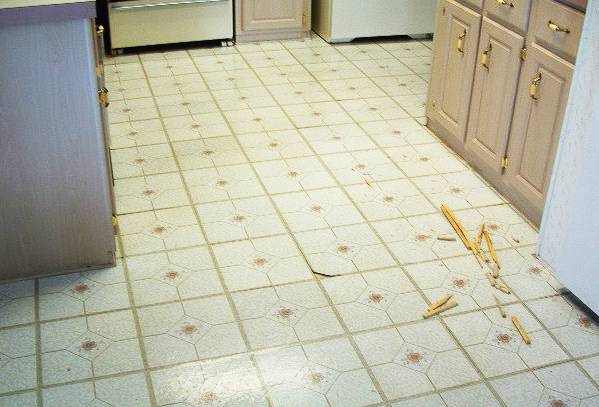
Vinyl floor is a flooring option that offers an authentic and elegant appearance but not only. This type of floor is commonly chosen for its durability, versatility, and easy maintenance. Many people consider it an affordable flooring option that also gives a stylish look and provides a reliable flooring surface.
However, like any other flooring material, it is not impervious to wear and tear. There are many issues that can compromise the appearance of vinyl floors over time, including scratches, tears, dents, and other problems.
In this article, we will share with you some of the best tips and techniques that have proven outcomes for repairing vinyl flooring. We hope you will find this very useful but before that let’s have a look at some of the most common vinyl floor advantages.
Why Vinyl Flooring is Such a Great Option: 5 Benefits
Vinyl flooring is a synthetic flooring material made from polyvinyl chloride (PVC) and other additives. Thanks to the materials from which it is made, this type of floor covering is attributed a great many positive qualities that make it so popular among interior designers, property owners, and real estate investors.
- Durability
A vinyl floor is designed to withstand heavy foot traffic, so it is suitable for areas with high foot traffic, such as kitchens, hallways, and commercial areas.
- Water resistance
Vinyl flooring is highly water-resistant, which makes it suitable for bathrooms, kitchens, and other areas prone to moisture.
- Variety of styles, colors and patterns
This type of floor comes in different colors and styles which makes it a great choice for any interior design. Vinyl flooring is chosen because often replicates the look of natural materials like wood or stone.
Common Damages on Vinyl Flooring
Yes, vinyl flooring is known for its durability but it doesn’t mean it’s fully protected from the appearance of scratches, cracks, or wear over time. There are various damages that can be the reason for repairing vinyl flooring. Let’s check some of them:
- Scratches
Heavy furniture, pet claws, or moving objects can cause visible scratches and scuffs on the vinyl surface. These marks make the floor look worn and aged.
- Tears
The most common reason for floor tears is moving furniture with sharp edges, or dragging heavy items. This has a negative impact on the floor’s appearance that’s why you have to take actions to repair these tears.
- Dents
Placing weighty furniture without proper padding can lead to dents and indentations on vinyl floors. These damages are particularly noticeable and make the floor looks old and not well-maintained.
- Stains
Some strong cleaning chemicals or household products can cause stains on vinyl flooring. Usually, these stains are very difficult to remove.
- Warping due to moisture
If vinyl flooring is exposed to excessive moisture, such as water leaks or spills that don’t get cleaned right away, it can warp and swell.
These common damages can be addressed through proper maintenance, preventive measures, and effective repair techniques. This is the right way to prolong the lifespan and appearance of your vinyl flooring.
Best Tips and Techniques for Repairing Vinyl Floor Damages
There are many techniques to apply if you want to repair your vinyl floor for a short budget. You have to follow some of the tips below to achieve a seamless and effective outcome with less effort.
- Assess the damage
Before starting you have to determine what is the type of damage and how big it is. It depends on what repair method you will use and what materials you will need.
- Choose the right repair materials
Gather necessary items like vinyl patch kits, adhesive, color-matching markers, heat gun, vinyl filler, putty knife, and clear vinyl adhesive.
Best practice for scratch repair
If the scratch is minor, you can repair it by using a color-matching marker or pencil to fill in the scratch. If your case is about deeper scratches, apply a vinyl scratch repair kit following the manufacturer’s instructions. In the end, sand and polish the area for a smooth finish.
Best practice for tear vinyl floor repair
Before you start you have to be sure the place is perfectly cleaned and free of debris. Then use clear vinyl adhesive to seal small tears. For larger tears is better to use a vinyl patch kit to create a patch that matches the pattern of the floor.
Best practice for stain removal
The best you can do in case of stubborn stains is to use a vinyl floor cleaner and gently scrub the area. You can also try to apply a mixture of warm water and mild detergent.
Best practice for dent repair
There is a very smart tip to repair a dented area. The first step is to place a cloth or towel over the dent. The next step is to heat the area with a heat gun on low heat. The last thing you have to do is us a flat object and to gently press and lift the dent.

Lily Edwards is a dedicated blog author for ReSand.co.uk, using her background in Interior Design to write insightful articles on floor care, including sanding, oiling, and polishing.
When she's not crafting informative blog posts, Lily enjoys exploring the British countryside, antique hunting, and indulging her love for DIY home improvement projects.
